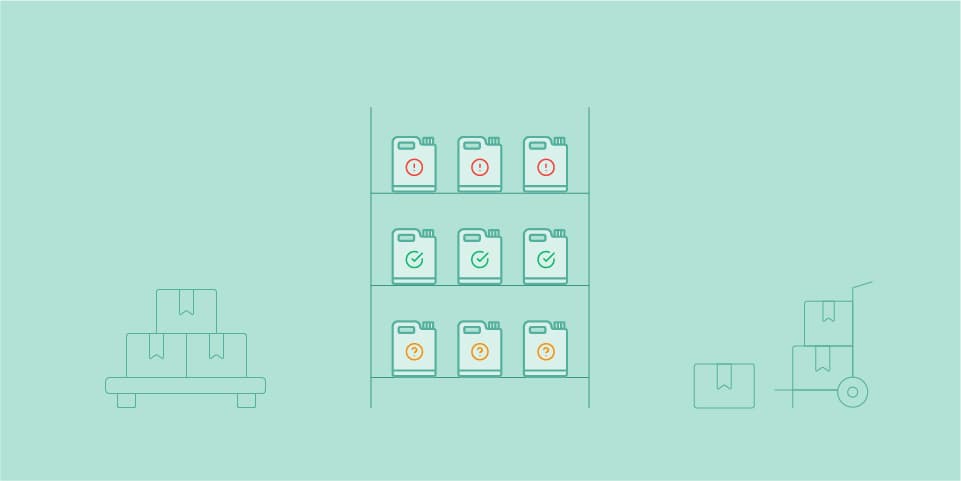In today’s work environment, it is important to reduce the use of hazardous chemicals to protect both human health and the environment. Substitution work, or the process of replacing hazardous chemicals with safer alternatives, is an important part of risk management. According to REACH, companies handling chemicals need to review and identify hazardous chemicals and then substitute them with less harmful alternatives.
In this article, our EHS consultant, Emma Thorstensson, provides seven effective tips to help you successfully get started with your substitution work.
1. Inventory and elimination of unnecessary products
Start with a thorough inventory of your existing chemical products. By identifying and removing unnecessary products, you gain an overview of your chemical workplace risks and can phase out the chemical substances and products that are not used. This not only reduces the risk of exposure but also simplifies the process for your substitution planning.
Tip! Use the iChemistry mobile app for easy inventory management.
2. Minimize the number of products with similar properties
If you have an abundance of chemical products with similar properties, it can increase the workload and complexity of your substitution work. By minimizing the number of products with the same properties, you can not only streamline the workflow but also reduce the administration surrounding the chemical sources of risk since you have fewer products to assess for risk.
Utbildning
Substitution av kemiska produkter
En övergripande kurs i hur du kan arbeta med substitution. Vi går igenom vilka lagkrav som gäller, hjälper dig med prioriteringar samt ger praktisk information om vad du bör tänka på. Företag som använder iChemistry får även se hur systemets verktyg för substitution kan användas.
3. Prioritize substitution measures
Strategic prioritization is crucial for successful substitution work. By creating a list of priorities, such as based on hazard level, quantity, or other relevant factors, you can focus your resources on the most critical areas. It may be beneficial to keep an eye on restriction lists where you can easily see restrictions and hazard levels. This facilitates the implementation of the substitution plan and ensures that the most hazardous substances are replaced first.
4. Change method
A simple way to reduce the amount of chemicals is to replace chemical products with methods where no chemical product is needed. This is often a safer long-term solution as it reduces the number of chemical sources of risk and the risk of exposure to harmful chemicals.
5. Switch to less hazardous products
By switching to less hazardous products, you reduce chemical risks and promote a safer work environment. You can do this through a comparative analysis of factors such as ingredients, waste management, and any legal requirements related to the products.
6. Reduce the amount of substances used
Another important aspect is actively reducing the amount of chemicals used. By avoiding overdosing and excess, you can not only reduce costs but also minimize the risk of accidental exposure and contribute to a more sustainable work environment. A win-win situation!
7. Seek assistance from an expert.
We understand that tackling this process can be challenging, which is why it might be a good idea to seek assistance from an expert to get started. We are here to assist you from inventory and risk assessment to strategic prioritization and implementation of safer alternatives – allowing you to focus on other aspects of your business.
Do you have any questions?
Our EHS consultants have extensive experience in inventory and substitution work and are here to help you enhance safety and comply with legal requirements. We also offer training in environmental and workplace legislation, REACH, chemical management, and risk assessment.
Do you have any questions? Don’t hesitate to contact us by clicking the button below or emailing us directly at consulting@intersolia.com.







